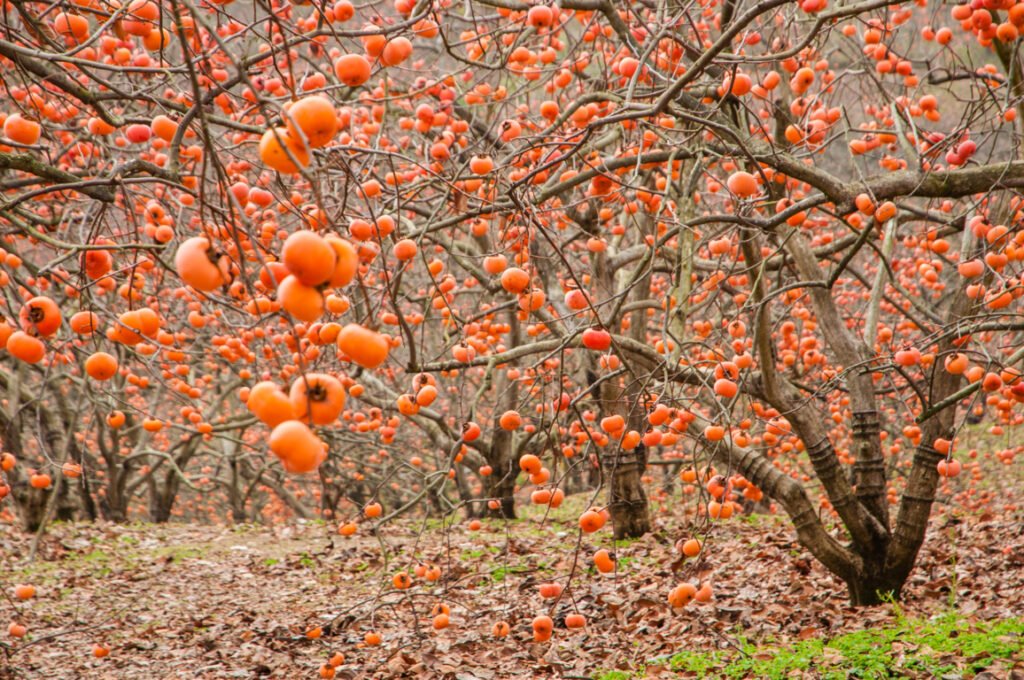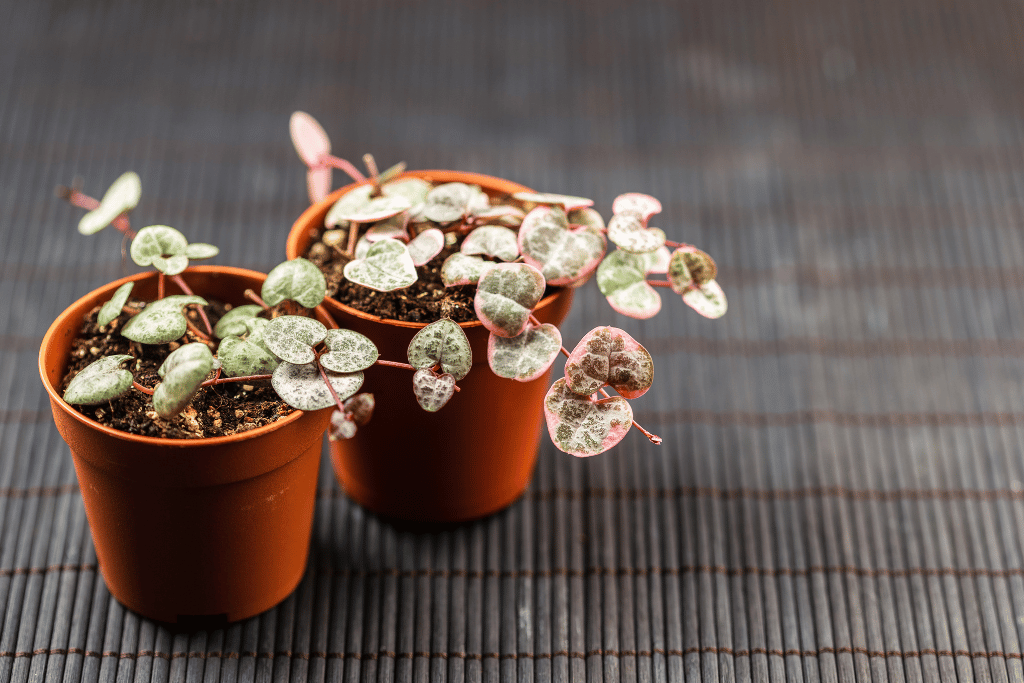Ever thought about the special flowers that start with L? They have some interesting facts to share! For instance, the Lotus is a super meaningful flower in many cultures, symbolizing purity and wisdom. And have you seen Laceflowers? They have pretty patterns that look like lace.
Guess what? There’s an ‘L’ flower with a nice smell that’s used to help people relax. Also, did you know that some flowers that start with the letter L, have secret meanings? They’re like a special code from nature.
Do you want to explore these cool flowers starting from L and learn their stories? This article will serve that. So, keep reading.
30 Flowers That Start With L
1. Lilies – Elegance and purity in bloom
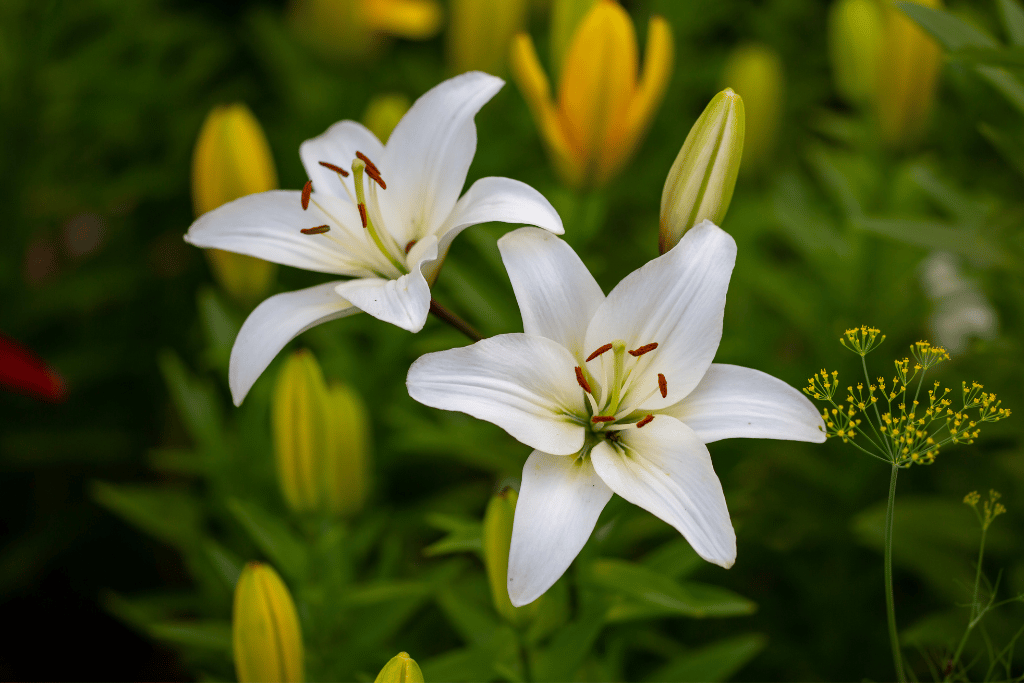
Lilies, those exquisite flowers that start with L, are a true embodiment of elegance and purity. With their stately presence and captivating fragrance, they have become symbols of various meanings across cultures and contexts. These blossoms showcase a variety of forms, from the classic trumpet-shaped Asiatic lilies to the elaborate and fragrant Oriental lilies.
These majestic blooms often take center stage in floral arrangements, wedding bouquets, and gardens, drawing admiration and awe. Lilies come in an array of colors, including pristine whites, vibrant yellows, romantic pinks, and rich oranges. Each hue carries its own significance, from purity and virtue to passion and devotion.
Lilies’ timeless charm has earned them a place in myths, legends, and religious stories. They have been associated with goddesses, royalty, and the divine. Their delicate petals and striking appearance remind us of the beauty that can emerge from the earth, inspiring us to appreciate the fleeting moments of life.
2. Lavender – A fragrant tapestry of calm
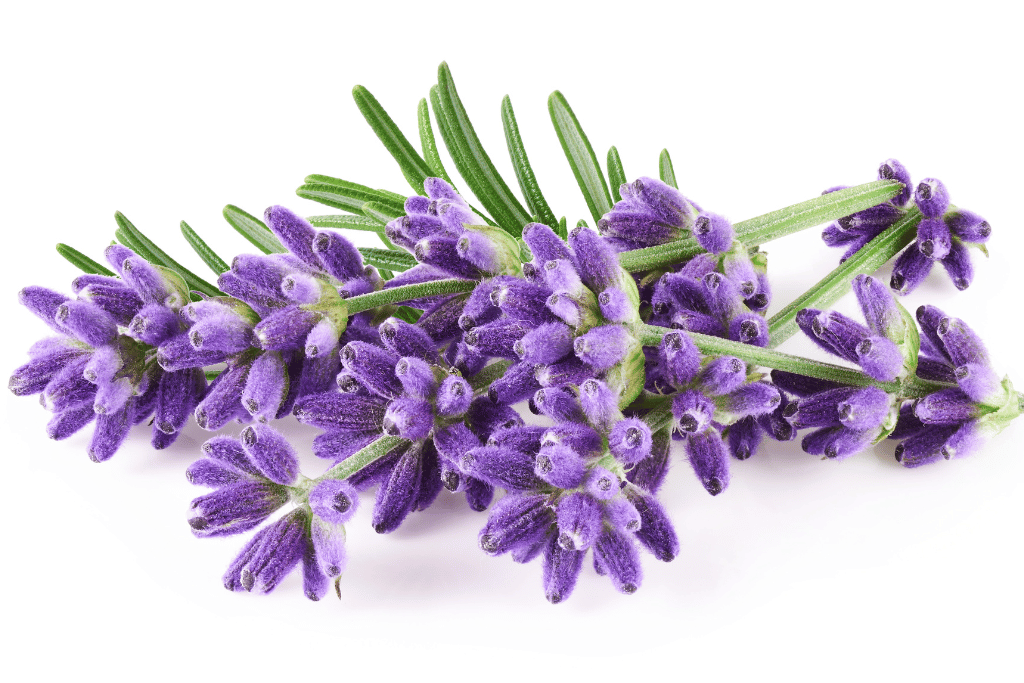
Known for its therapeutic properties, lavender’s scent is believed to have relaxing effects on the mind and body. It’s often used in aromatherapy to promote restful sleep and reduce stress. The delicate spikes of lavender flowers not only provide visual charm but also attract pollinators like bees and butterflies, enhancing the biodiversity of outdoor spaces. Lavender’s gentle beauty and calming aura make it a cherished addition to gardens and homes alike.
Lavender, a soothing and aromatic herb, is one of the beloved flowers that start with L. Its delicate purple blooms form a fragrant tapestry that evokes a sense of tranquility and calm. With its timeless appeal, lavender has found its way into gardens, landscapes, and even various products, from essential oils to perfumes.
In addition to its soothing qualities, lavender holds cultural significance. It has been used for centuries in rituals, remedies, and crafts, reflecting its enduring popularity.
3. Larkspur – A symphony of colors and grace
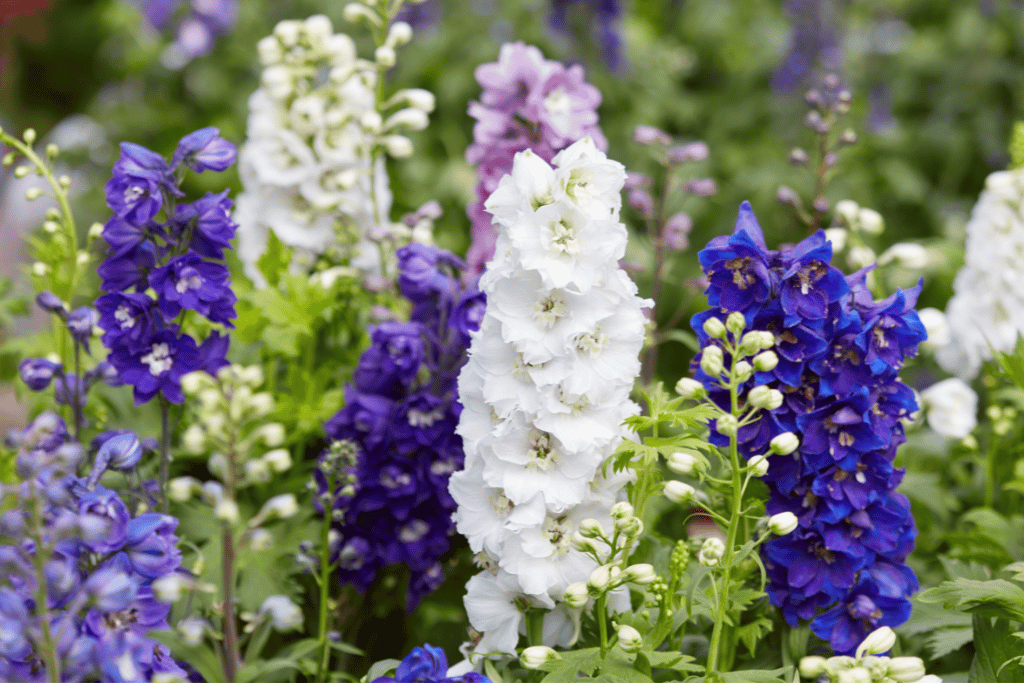
Larkspurs, members of the Delphinium genus, are among the captivating flowers that start with letter L. These blossoms have a unique form, with petals that resemble a spur or claw. This distinctive feature adds to their allure and sets them apart from other flowering plants. Larkspurs’ vertical growth and vivid hues make them popular choices for adding vertical interest and drama to flowerbeds and borders. These tall, elegant spikes adorned with multiple vibrant blooms create a symphony of colors in gardens and landscapes. Larkspurs come in various shades, including deep blues, purples, pinks, and whites, adding a touch of grace and charm to outdoor spaces.
Larkspurs have also been linked to meanings and symbolism. In the language of flowers, they are often associated with qualities like lightness and levity. Their appearance and symbolism make them a versatile choice for various occasions, from casual garden gatherings to formal events.
4. Lotus – Beauty rising from the depths
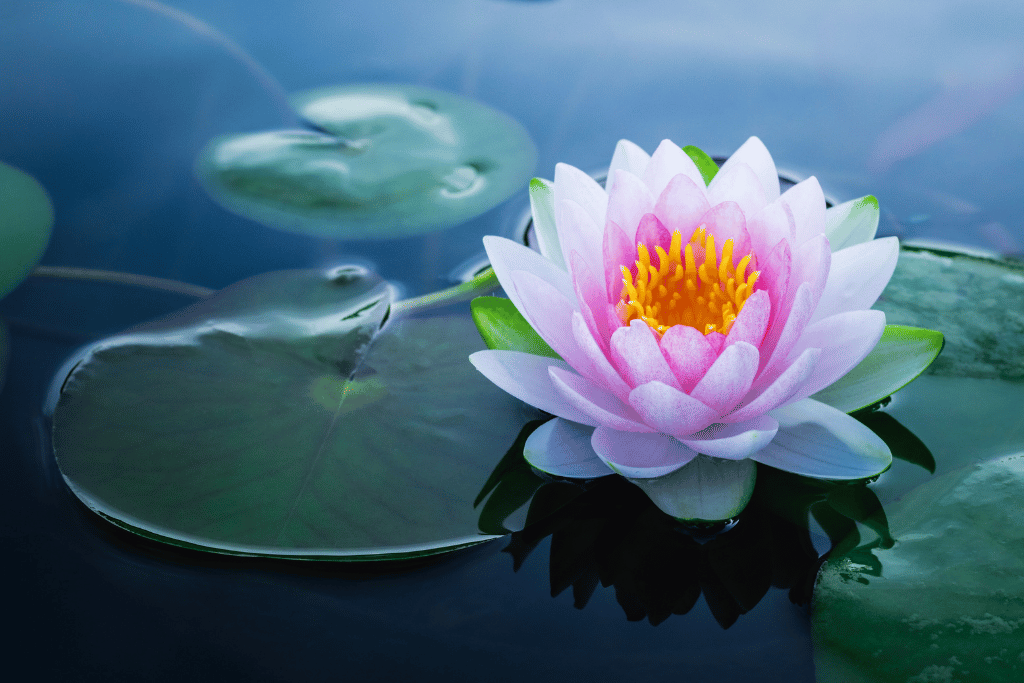
The lotus, a flower deeply rooted in cultural and spiritual traditions, is a prominent member of flowers that float on water. Rising gracefully from the mud and water, the lotus symbolizes purity, enlightenment, and rebirth across various cultures, particularly in Eastern philosophie
With its distinctive circular leaves and elegant, multi-petaled blooms, the lotus captivates with its serene beauty. The flower’s significance is intertwined with concepts of spiritual growth and the journey towards enlightenment, as it emerges from the darkness to bloom in radiant splendor.
Lotuses come in various colors, including white, pink, and blue. Each hue holds its own meaning, representing purity, compassion, and wisdom, respectively. The lotus’ mesmerizing presence and spiritual symbolism have made it a revered subject in art, literature, and religious practices.
5. Lily of the Valley – Delicate blooms of happiness
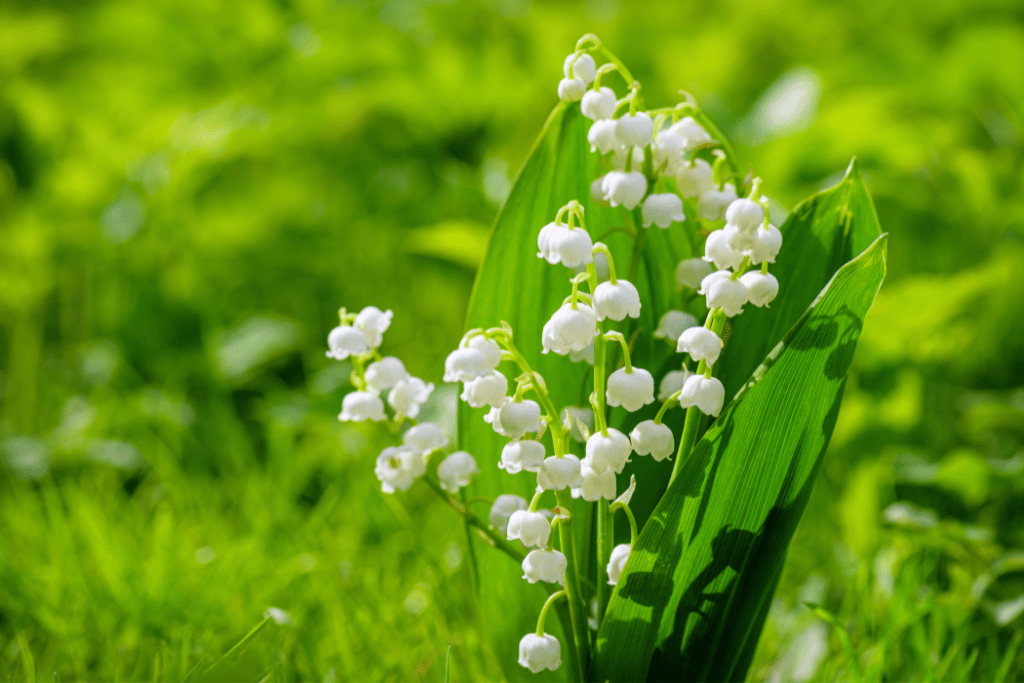
The delicate allure and gentle essence of the Lily of the Valley serve as a reminder to cherish life’s uncomplicated joys and the wonders bestowed by nature. This flower, distinguished by its dainty, bell-shaped blossoms and captivatingly sweet aroma, showcases its fragile petals in elegant clusters that bestow an air of refinement upon shaded gardens and wooded landscapes. The timeless elegance and aroma of the Lily of the Valley have established it as a beloved choice for bridal bouquets and perfumes.
These blossoms frequently symbolize happiness, modesty, and the resurgence of joy. Their emergence in the spring heralds the advent of warmer days and the rejuvenation of life following the frigid winter months.
In conclusion, these flowers that start with L – Lilies, Lavender, Larkspur, Lotus, and Lily of the Valley – each offer their own unique beauty, symbolism, and significance. They remind us of the wonder and diversity found in the world of flora and encourage us to embrace the elegance and grace that nature provides.
6. Liatris – Vertical elegance in the wild
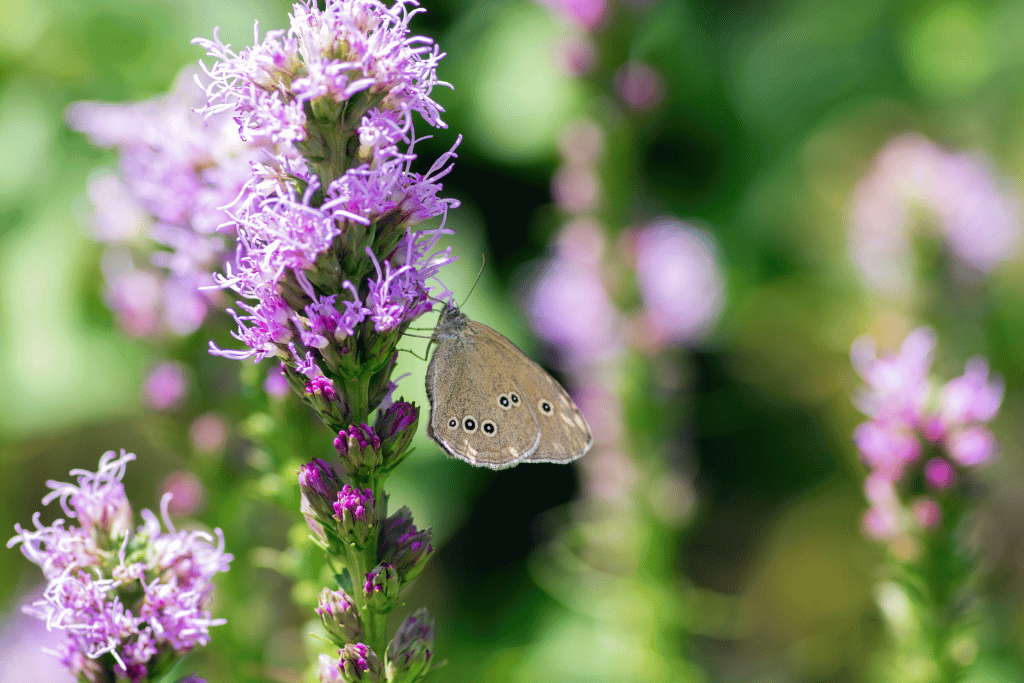
Liatris, commonly known as Blazing Star or Gayfeather, is a striking flower that graces meadows and gardens with its vertical elegance. Its tall spikes of fuzzy, bottlebrush-like blooms create a dramatic visual impact. Liatris flowers typically come in shades of purple, although there are varieties that display white or pink blooms. Liatris holds its own symbolism, representing qualities like strength and confidence. Its robust growth and bold colors remind us to stand tall and embrace our unique attributes, contributing to the rich tapestry of life.
These vibrant spikes not only add a splash of color to the landscape but also attract pollinators like bees and butterflies, making them a beneficial addition to any garden. The name “Blazing Star” aptly captures their standout appearance and their ability to light up open spaces.
7. Lupine – Vibrant spikes of wild beauty
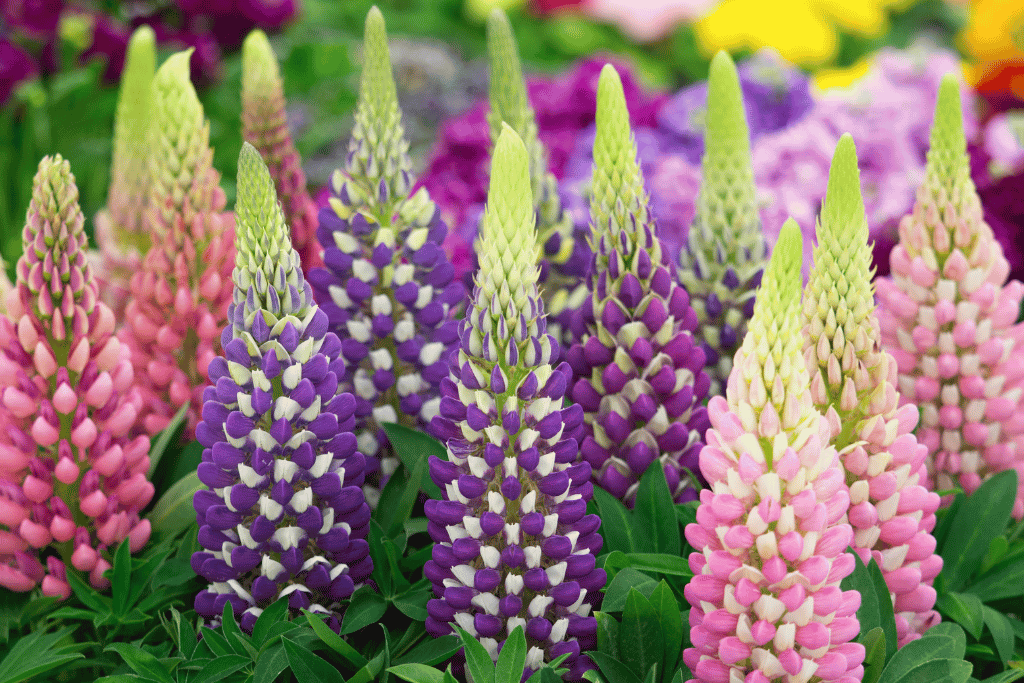
Lupines’ unique appearance and lively colors embody the spirit of wild beauty, encouraging us to appreciate the untamed wonders of the natural world. Known for their tall spires of pea-like flowers, bring a burst of color to various landscapes, from meadows to mountain slopes. These captivating flowers come in an array of shades, including vibrant purples, blues, pinks, and yellows, creating a vivid spectacle that delights both humans and pollinators.
Lupines have a resilient nature, often thriving in challenging environments. Their ability to flourish in diverse conditions serves as a reminder of the strength that can be found in the midst of adversity. Additionally, these flowers are known for their role in improving soil quality through nitrogen fixation.
8. Lisianthus – Delicate charm in the garden

Native to North and South America, Lisianthus flowers come in various hues, including shades of blue, pink, white, and lavender. Lisianthus, often referred to as the “Texas Bluebell” or “Eustoma,” is a delicate and graceful flower that graces gardens and bouquets with its charming presence.
Their intricate petals and elegant form make Lisianthus a popular choice for floral arrangements, adding a touch of sophistication to any setting. The blooms’ resemblance to roses and peonies adds to their appeal, offering an alternative to more common flower choices.
Lisianthus is often associated with sentiments of appreciation, gratitude, and charm. Their quiet beauty serves as a reminder to find joy in life’s simple pleasures and to cultivate an attitude of gratitude.
9. Lobelia – Trailing bursts of vibrant color
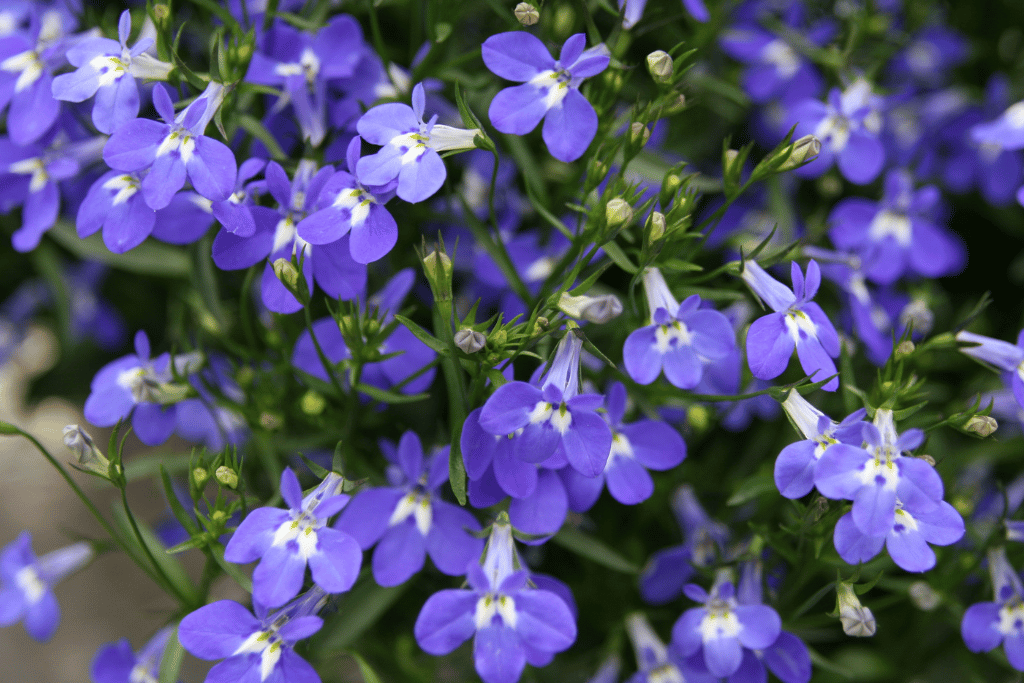
Lobelia’s cascading growth habit makes it an excellent choice for adding a pop of color to vertical spaces. Whether planted in borders or used as a trailing element in arrangements, Lobelia brings a sense of movement and liveliness to any environment.
Lobelia, a versatile flowering plant that starts with L, offers trailing bursts of vibrant color that brighten up gardens, containers, and hanging baskets. Its dainty, tubular flowers form clusters of blue, purple, white, or pink, creating a captivating display that drapes gracefully over edges. This flower’s symbolism is rooted in qualities like anticipation and happiness, capturing the feeling of looking forward to brighter days. Lobelia’s ability to spill over and flourish serves as a metaphor for embracing life’s spontaneous moments.
10. Leucadendron – Exotic flair and architectural elegance
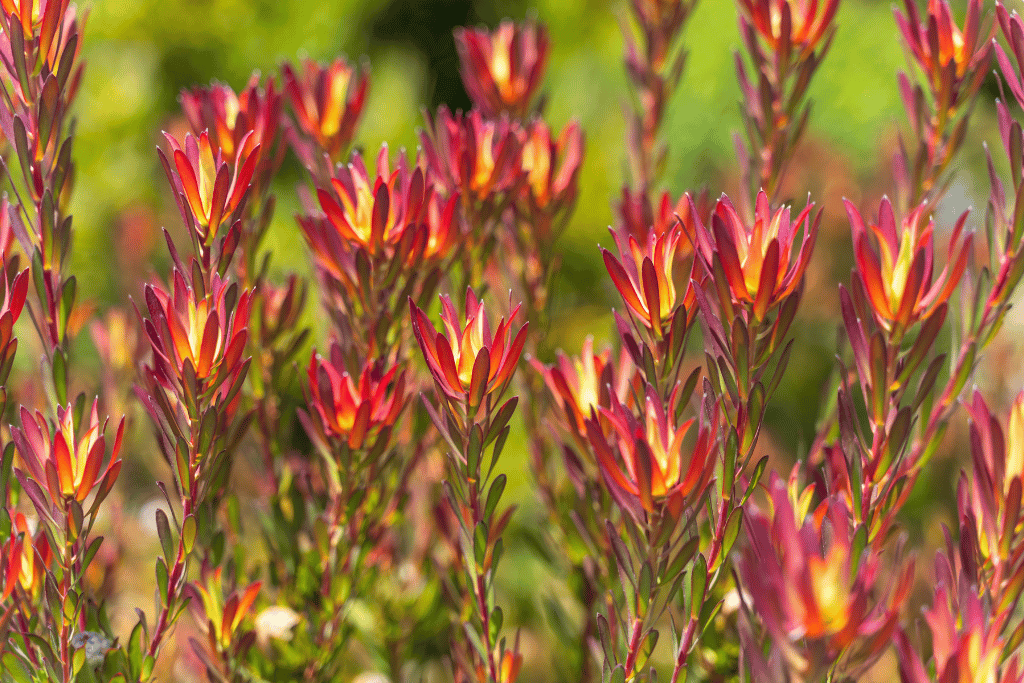
Leucadendron, a flowering plant native to South Africa, exudes exotic flair and architectural elegance. These evergreen shrubs are characterized by their unique, cone-like flower structures surrounded by colorful bracts. The bracts can range in color from fiery reds and oranges to soft pinks and yellows.
Leucadendrons are celebrated for their distinctive appearance and their ability to thrive in arid conditions. Their hardiness and striking forms make them a popular choice for adding texture and interest to gardens, especially in climates with Mediterranean characteristics.
These flowers symbolize diversity and adaptability, highlighting the beauty that emerges when unique elements come together. Leucadendrons’ captivating blend of colors and forms reminds us to appreciate the intricate details that contribute to the overall tapestry of life.
11. Lantana – Everchanging hues in the breeze
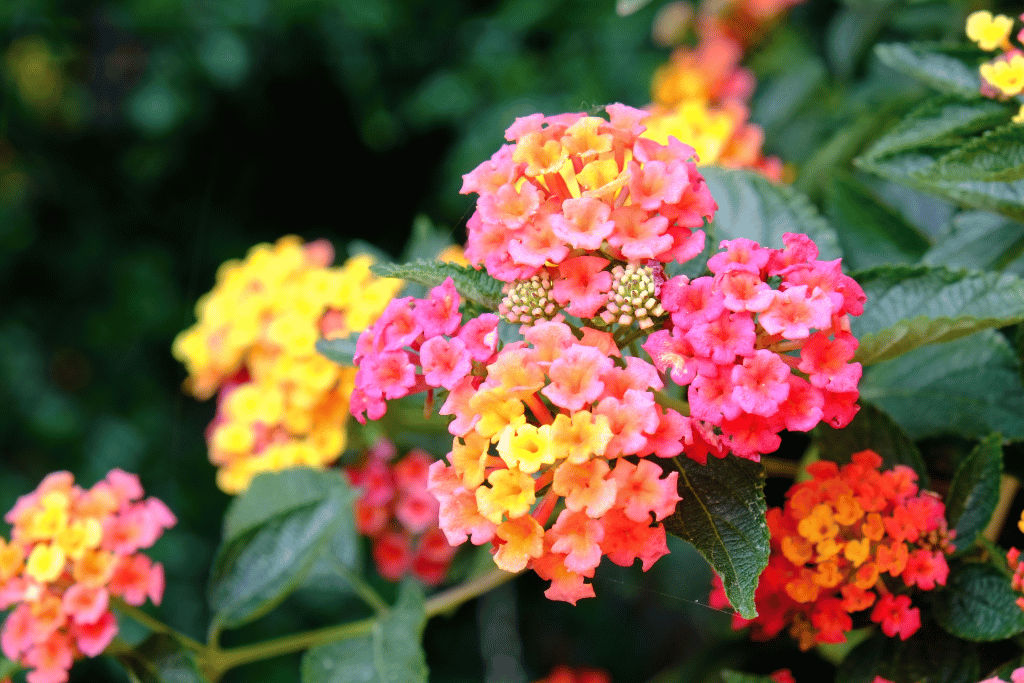
Lantana is a vibrant and everchanging flower that graces gardens with its captivating hues. These clusters of small, tubular blossoms appear in a spectrum of colors, including shades of red, orange, pink, and yellow. What makes Lantana unique is its ability to change colors as the flowers age, creating a dynamic and multicolored display on a single plant.
This flower’s versatile nature and resilience make it a popular choice for adding color to landscapes, containers, and borders. Lantana’s nectar-rich blooms also attract butterflies, contributing to the biodiversity of outdoor spaces.
Lantana’s symbolism revolves around change and transformation, reminding us of life’s impermanence and the beauty that can emerge from embracing transitions.
12. Lavatera – Graceful beauty in the garden
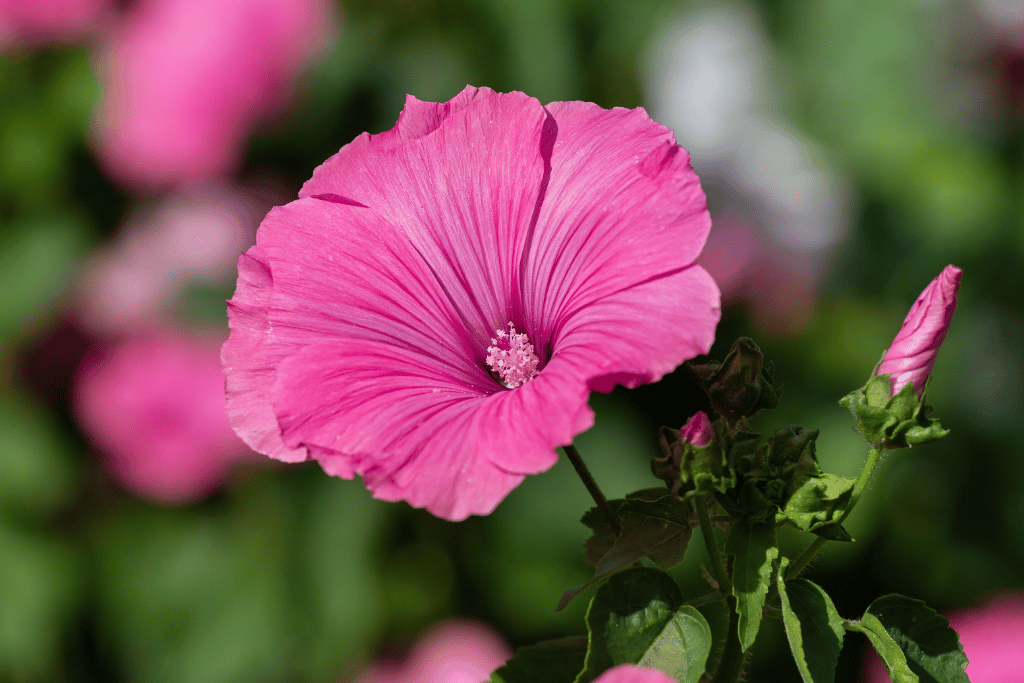
Lavatera’s showy blooms and lush foliage make it a visually striking addition to both formal and informal gardens. These flowers often serve as focal points or border plants, contributing to a sense of structure and charm. Symbolically, Lavatera represents sweetness and gentleness, reminding us to cultivate kindness and tenderness in our interactions with the world around us.
Lavatera, also known as the Tree Mallow, is a charming flowering plant that brings graceful beauty to gardens and landscapes. Its large, saucer-like flowers appear in shades of pink, white, or purple, creating an enchanting presence that adds depth to outdoor spaces.
13. Leucojum – Ephemeral elegance by water’s edge
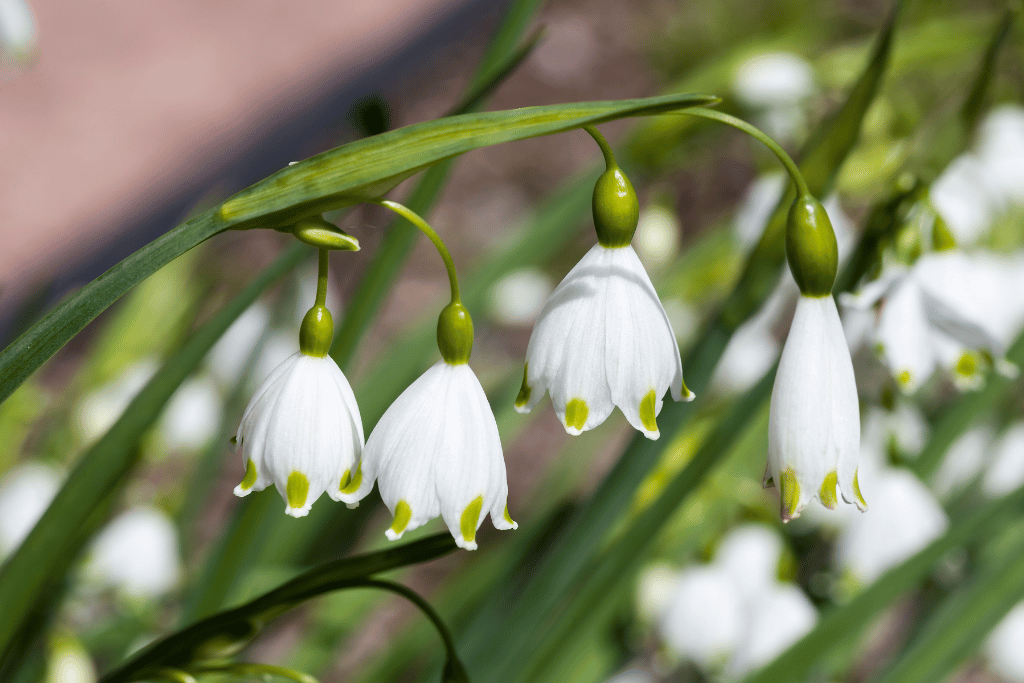
Leucojum, commonly known as Snowflakes, embodies ephemeral elegance as it blooms near water’s edge. Resembling delicate bells, these white flowers often have green or yellow markings on their petals, creating a subtle and serene appearance.
The name “Snowflakes” captures the flower’s winter-blooming nature, defying the cold to bring a sense of purity and renewal to the colder months. Leucojum’s preference for damp or wet soil makes it a favorite for planting near ponds, streams, or wet meadows. Its graceful presence adds a touch of ethereal beauty to these natural settings.
14. Linaria – Whimsical spires of color
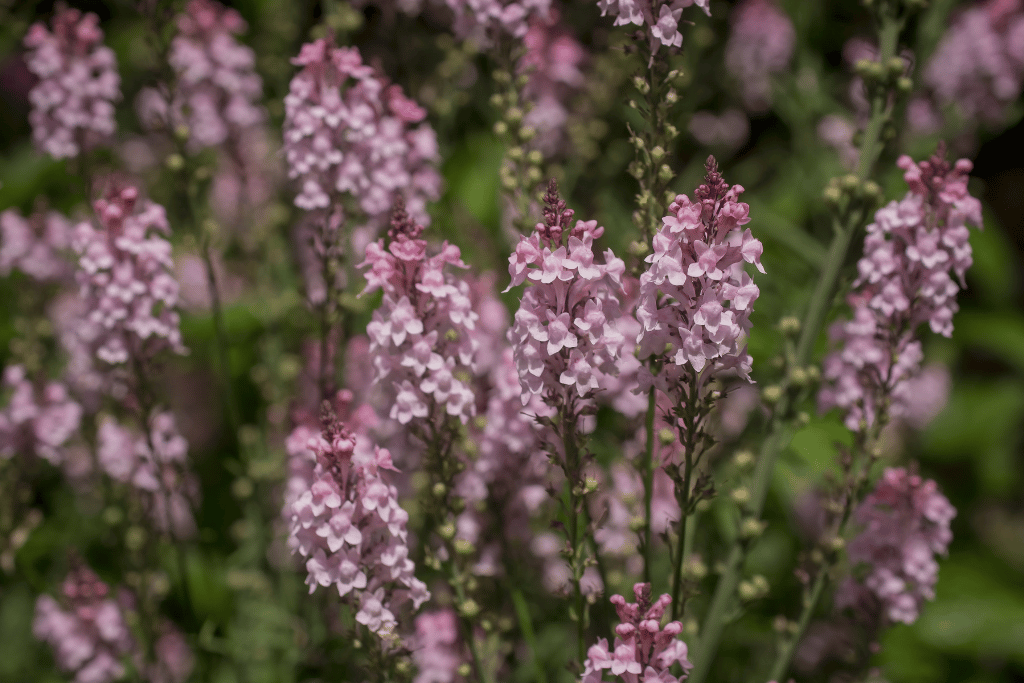
Linaria’s unique form and profuse flowering habit make it a favorite for cottage gardens and informal landscapes. The vertical lines of its blooms add a sense of structure and rhythm to outdoor spaces. Beyond its ornamental appeal, Linaria is often associated with magic and whimsy in folklore, reminding us of the enchanting wonders that can be found in the natural world.
This showy bloom, referred to as Toadflax, is a whimsical flowering plant characterized by its spires of delicate, snapdragon-like blossoms. These blooms come in various shades, from soft pastels to vibrant hues, creating a lively and eye-catching display.
15. Lychnis – Nectar-filled blooms for pollinators
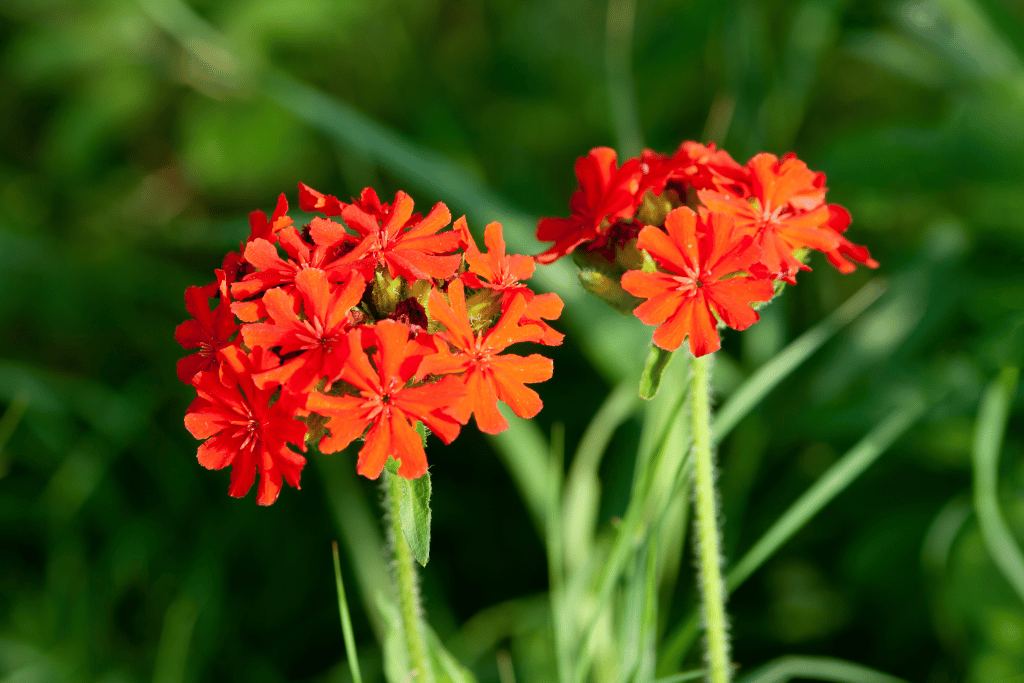
Lychnis, often recognized as Campion or Maltese Cross, provides blossoms brimming with nectar that allure pollinators to both gardens and untamed vistas. These blooms showcase grouped petals displaying tones of red, pink, or white, producing a vibrant explosion of color that distinctly contrasts with the verdant leaves.
Lychnis’ nectar-rich flowers make it a valuable addition to pollinator-friendly gardens, supporting bees, butterflies, and other beneficial insects. Symbolically, Lychnis is associated with love and admiration, reflecting its vibrant and attractive appearance. The name “Maltese Cross” refers to the shape created by the overlapping petals, adding to its allure and intrigue.
16. Lewisia – Jewel-like blossoms of the wild
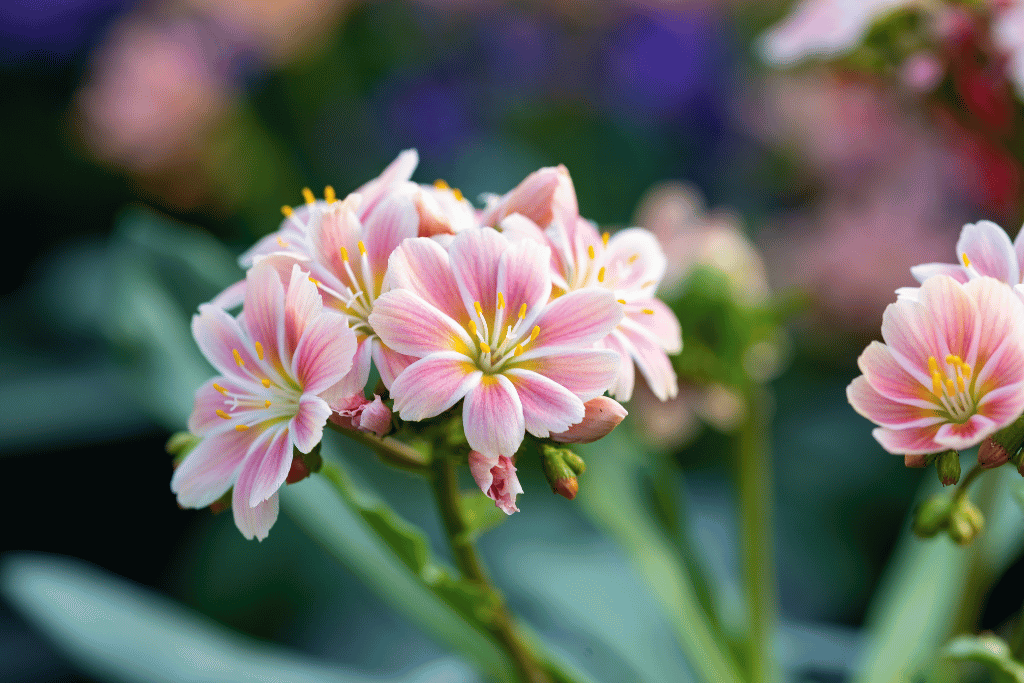
These delicate blooms remind us of the hidden beauty that can be found in even the harshest environments, encouraging us to appreciate the tenacity of life. Lewisia’s resilience and ability to thrive in harsh conditions make it a symbol of endurance and strength. Its name “Bitterroot” reflects its historical use as a food source by indigenous peoples and early settlers during times of scarcity.
Lewisia, also known as Bitterroot, is a charming alpine flower that graces rocky landscapes with its jewel-like blossoms. These dainty flowers appear in shades of pink, white, and yellow, often boasting vibrant hues that contrast against their rocky surroundings.
17. Linum – Delicate beauty in wildflowers
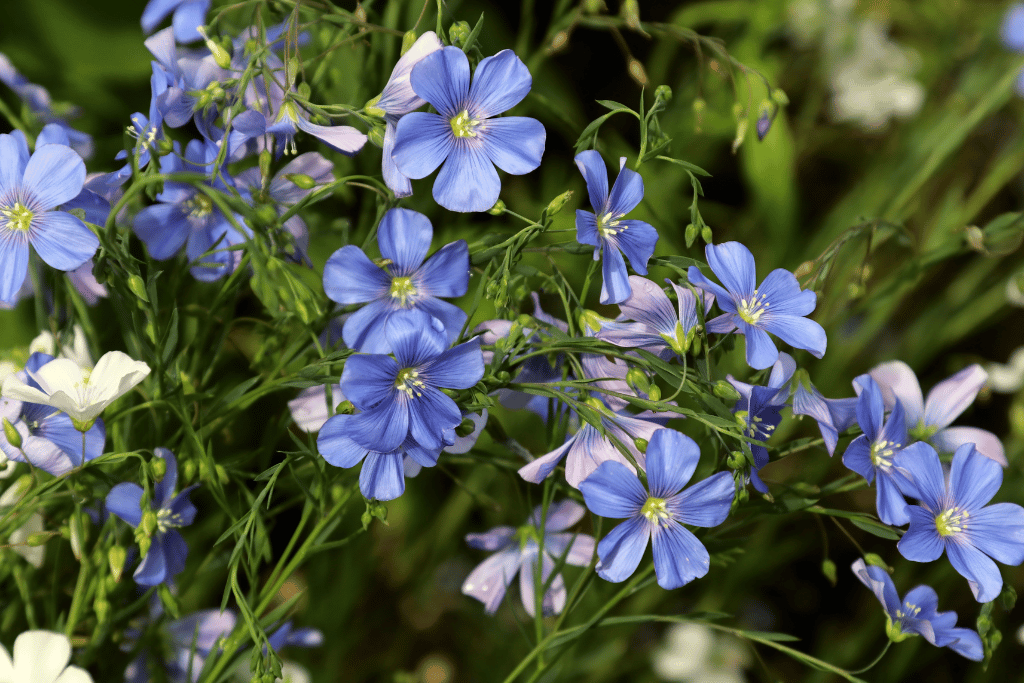
Symbolically, Linum embodies notions of domestic happiness and beauty. Its ephemeral blossoms serve as a poignant reminder to cherish life’s fleeting instances and discover delight in its intricate, delicate elements. Linum, also recognized as Flax, emerges as a dainty and elegant wildflower, adorning landscapes with its understated charm. Exhibiting five-petaled blooms in gentle blue, pink, and white hues, it imparts a soothing and tranquil aura.
Flax is not only appreciated for its ornamental value but also for its practical use. The fibers of the flax plant are used to create linen, making it one of the oldest cultivated plants with both aesthetic and utilitarian purposes.
18. Lythrum – Pondside splendor in shades of pink
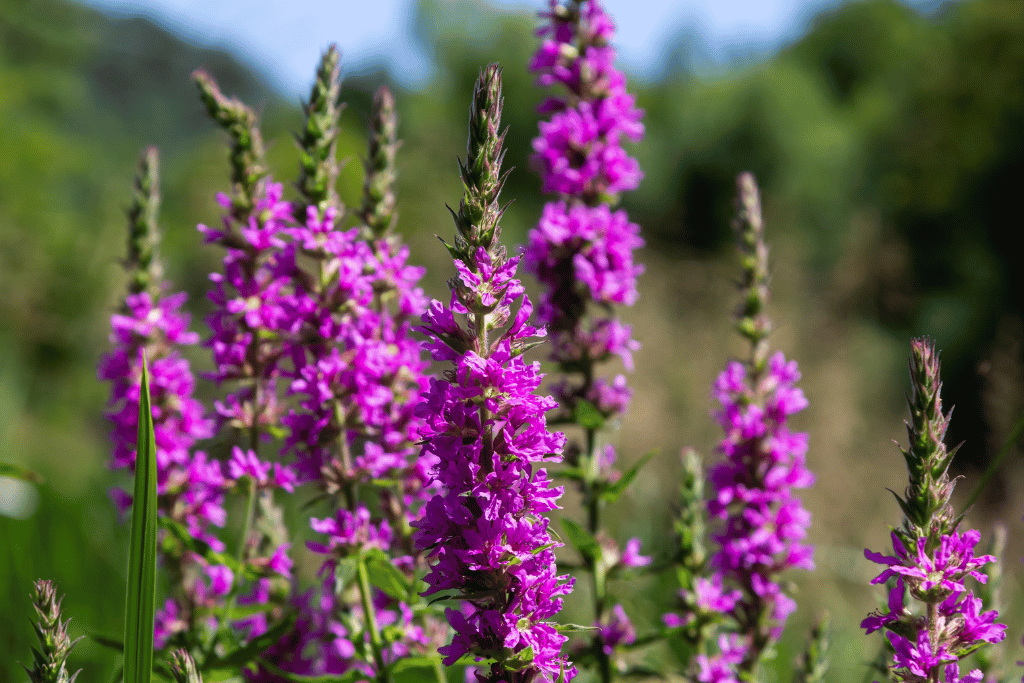
Lythrum, known for its architectural form, creates a vibrant and cheerful display in wetland areas and water gardens. These purple blooms, commonly known as Loosestrife, is a water-loving perennial that adds pondside splendor with its tall spikes of pink blossoms. Lythrum’s presence benefits aquatic ecosystems by providing habitat and food for wildlife. The nectar-rich blooms attract bees, butterflies, and other pollinators, contributing to the overall health of the environment.
This flower’s name, “Loosestrife,” refers to the plant’s traditional use as a medicinal herb for wound healing. Symbolically, Lythrum embodies peace and harmony, reminding us of the tranquility found in natural landscapes and the interconnectedness of all living beings.
19. Limnanthes – Meadowfoam’s delicate carpet

Limnanthes, commonly known as Meadowfoam, is a charming wildflower that creates a delicate carpet of blooms in meadows and natural landscapes. Meadowfoam’s presence is not only visually appealing but also ecologically important. It provides habitat and food for pollinators, including bees and butterflies, contributing to the overall health of local ecosystems. These small, cup-shaped flowers appear in shades of white and yellow, forming a serene and tranquil scene.
The name “Meadowfoam” reflects the flower’s appearance, as its blossoms resemble the foamy appearance of meadow landscapes. Limnanthes serves as a reminder of the intricate beauty that can be found in simple and unassuming settings.
20. Lysimachia – Sunlit blooms of cheerfulness

Lysimachia’s name, derived from the ancient Greek ruler Lysimachus, reflects its historical use in herbal medicine. It was believed to have various healing properties, adding to its significance.
Lysimachia, commonly known as Loosestrife, is a flowering plant that brings sunlit cheerfulness to gardens and landscapes. These bright and cheerful flowers appear in shades of yellow, creating a vibrant display that catches the eye. These blooms symbolize positivity and happiness, reminding us to find joy in the simple and vibrant moments of life.
21. Leucothoe – Elegance in woodland settings
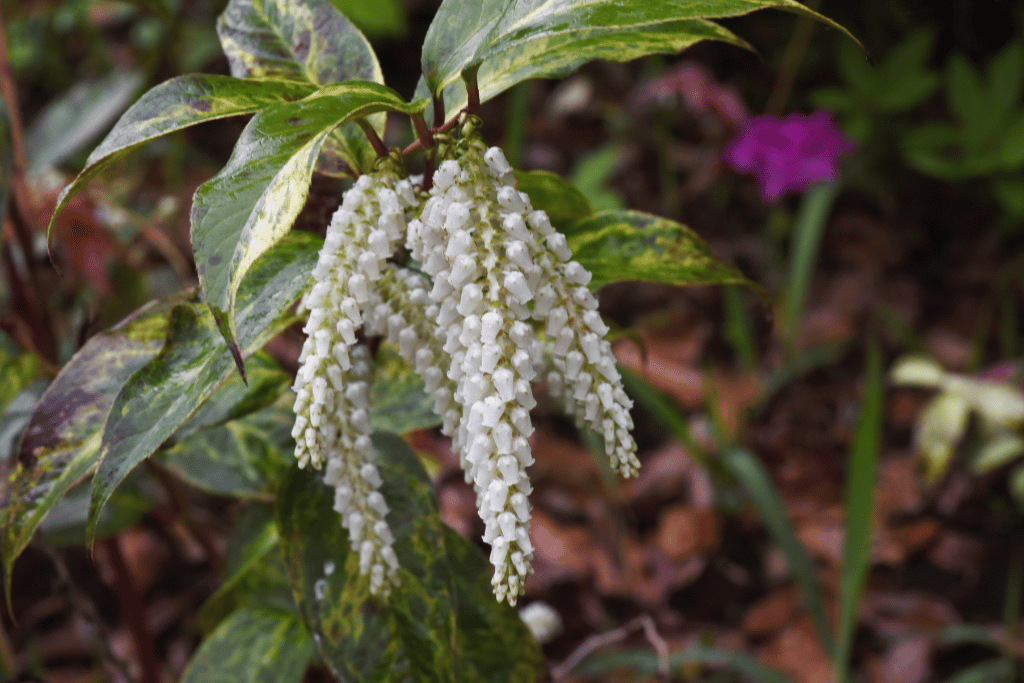
Leucothoe is an elegant flowering shrub that thrives in woodland and shaded areas. Its delicate, bell-shaped flowers appear in clusters, usually in shades of white or pink, creating a subtle and understated beauty that complements natural settings. This flower symbolizes humility and simplicity, encouraging us to appreciate the unassuming beauty of the world around us.
Leucothoe’s evergreen foliage and graceful form make it a valuable addition to shaded gardens. Its name, derived from Greek mythology, adds a touch of mythic charm to its presence.
22. Lophospermum – Cascading vines of vibrant color
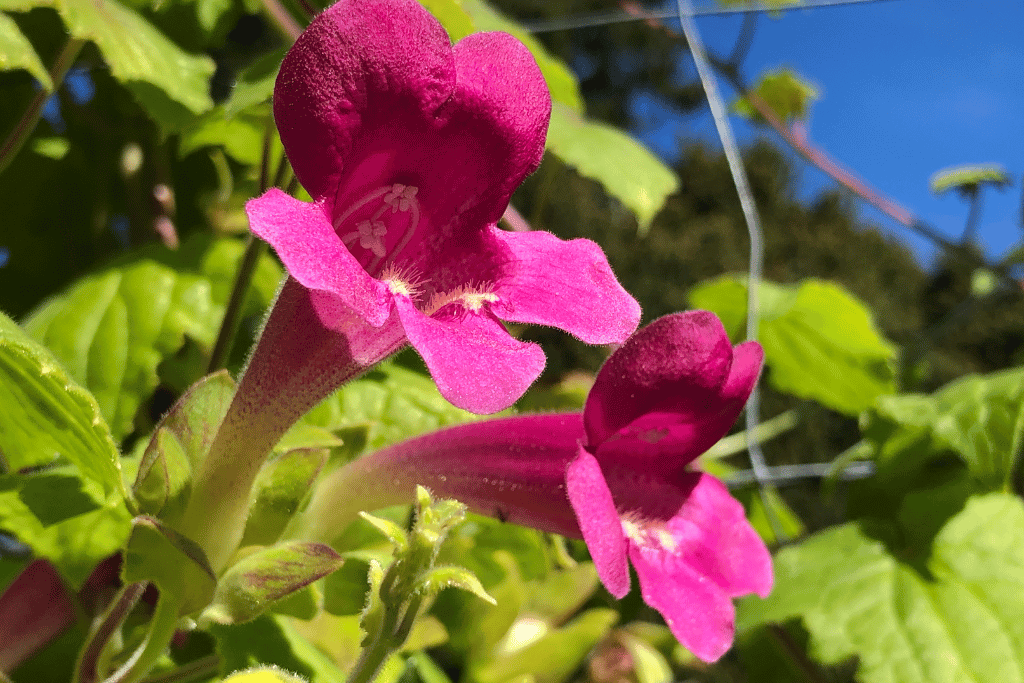
Lophospermum, trumpet-like blooms appear in shades of pink, red, and purple, creating a cheerful and playful display. It’s commonly known as Creeping Gloxinia or Twining Snapdragon, is a cascading vine that adds vibrant color to gardens and containers.
Lophospermum’s trailing growth habit makes it a versatile choice for hanging baskets and vertical gardens. Its ability to drape and twine adds movement and texture to outdoor spaces.
Symbolically, Lophospermum represents curiosity and exploration. Just as the vine seeks new heights, these blooms encourage us to embrace new experiences and perspectives.
23. Leptospermum – Tea Tree’s delicate allure
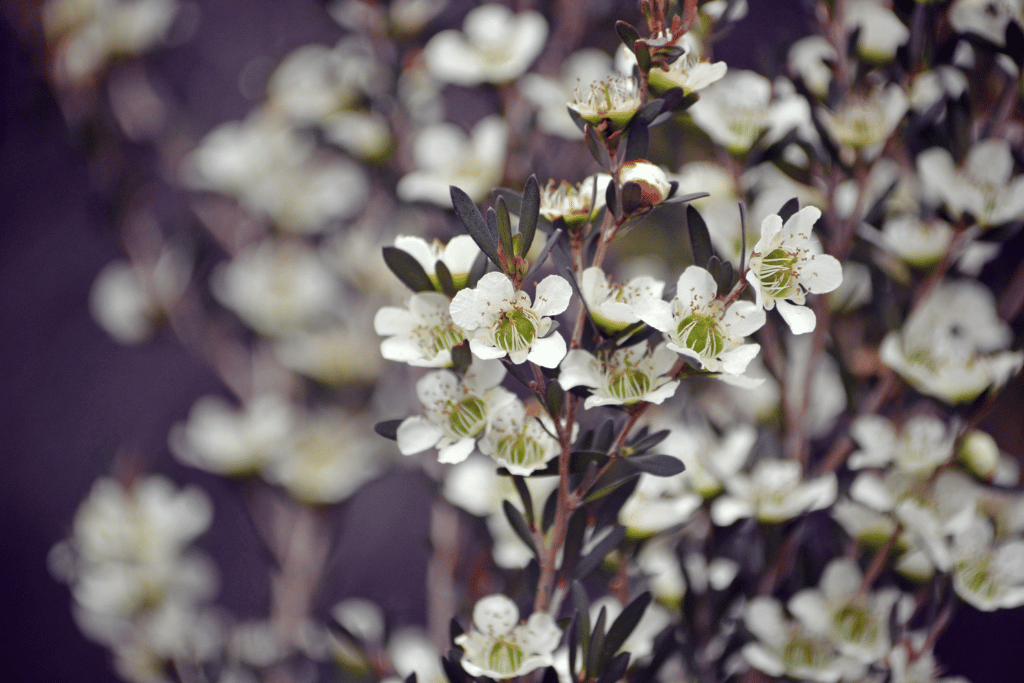
Leptospermum, commonly known as Tea Tree, is a flowering shrub that exudes delicate allure with its dainty flowers and aromatic foliage. These small, cup-shaped blooms come in shades of white, pink, or red, creating a charming and fragrant presence.
Tea Tree is renowned for its essential oils, which are frequently utilized for their antibacterial and antiseptic qualities. The delightful fragrance of the flowers contributes to the plant’s comprehensive sensory encounter.
Symbolically, Leptospermum represents purification and healing, reflecting its historical and contemporary uses for well-being. Its unassuming elegance reminds us of the soothing power of nature.
24. Leucanthemum – Cheerful daisies of simplicity
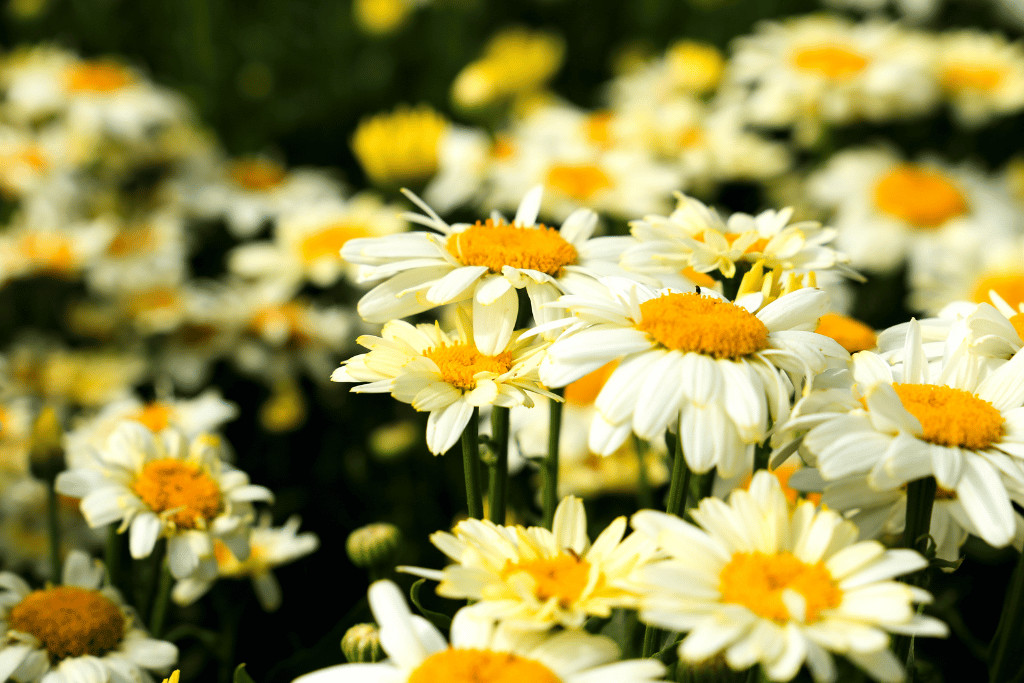
Leucanthemum, commonly known as Shasta Daisies, are cheerful flowers that bring simplicity and brightness to gardens and landscapes. Their classic daisy appearance, with white petals and yellow centers, evokes a sense of nostalgia and charm. They thrive in both formal and informal gardens, adding a touch of cheerfulness to borders and open spaces.
Shasta Daisies’ reliability and resilience make them popular choices for various settings. Symbolically, Leucanthemum represents innocence and purity, reminding us of the beauty that can be found in life’s simplest moments.
25. Lamium – Groundcover of delicate elegance
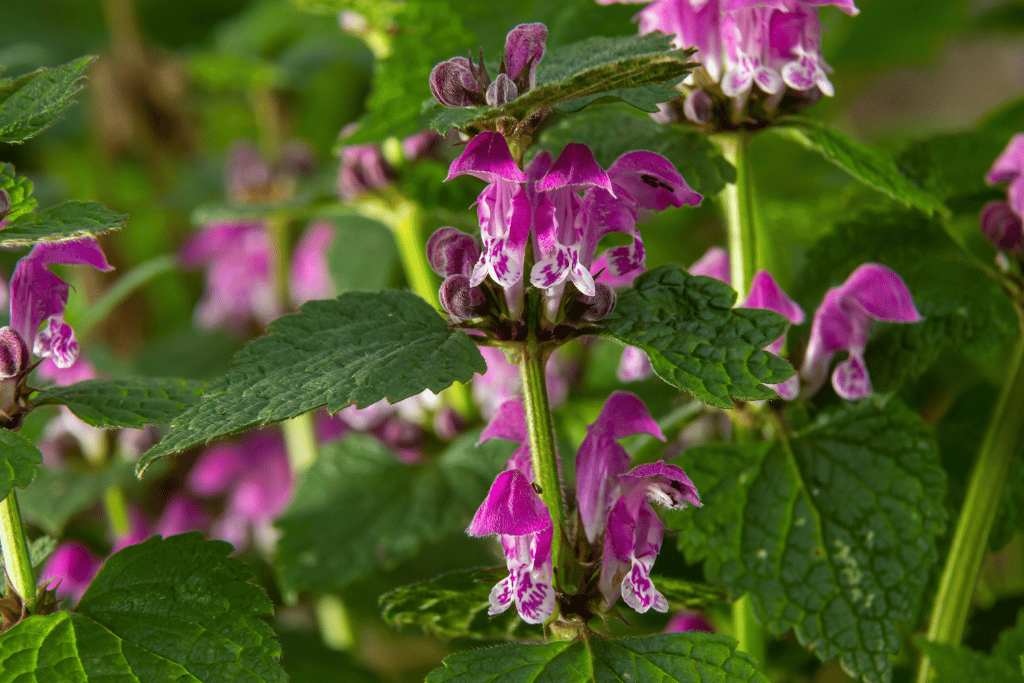
Symbolically, Lamium represents humility and subtlety. Its ability to thrive in less prominent areas serves as a reminder to appreciate the quiet beauty that often goes unnoticed. Lamium, commonly known as Dead Nettle, is a groundcover plant that adds delicate elegance to shaded areas. Its small, tubular flowers appear in shades of pink, purple, or white, creating a subtle and enchanting carpet of blooms.
Dead Nettle’s adaptability to varying light conditions makes it a valuable addition to woodland gardens and shaded borders. Its name, “Dead Nettle,” refers to the resemblance of its leaves to stinging nettles, although it does not have the stinging hairs.
26. Lagerstroemia – Vibrant splendor of Crape Myrtle
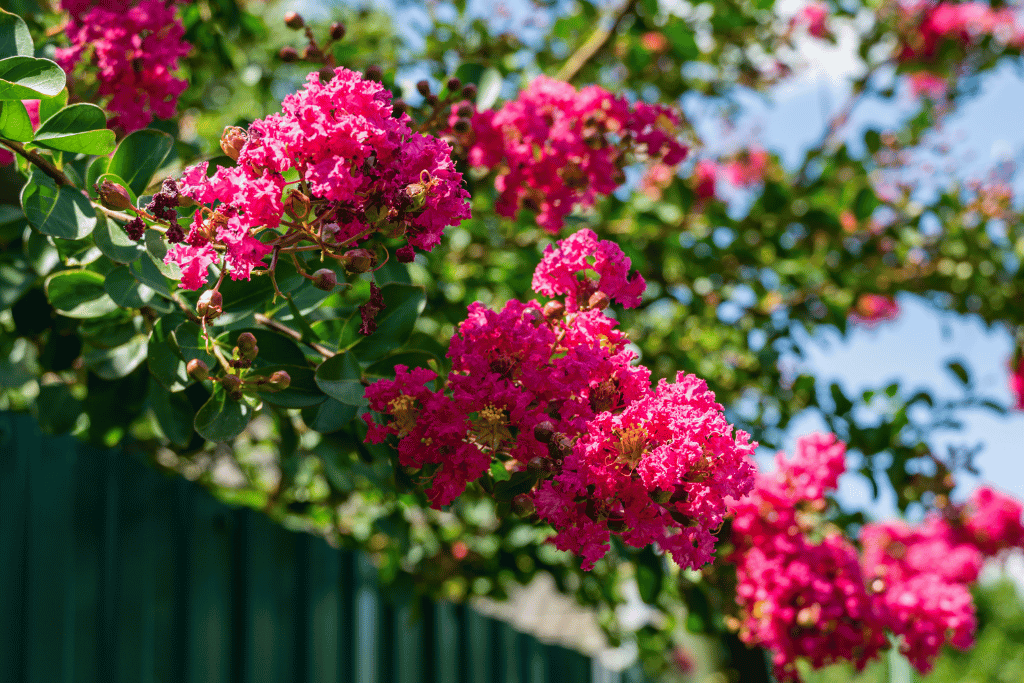
Lagerstroemia, commonly known as Crape Myrtle, is a flowering tree or shrub that adds vibrant splendor to landscapes. Its clusters of crinkled petals appear in shades of pink, purple, red, and white, creating a profusion of color. These flowers are often associated with summer landscapes, bringing a burst of color to hot and sunny months.
Crape Myrtles are beloved for their showy blossoms and distinctive bark, which adds visual interest year-round. Symbolically, Crape Myrtle represents adaptability and beauty in adversity. Its ability to thrive in challenging conditions and its resilience through changing seasons remind us of the strength that can be found in embracing life’s ups and downs.
27. Liriope – Graceful groundcover beauty
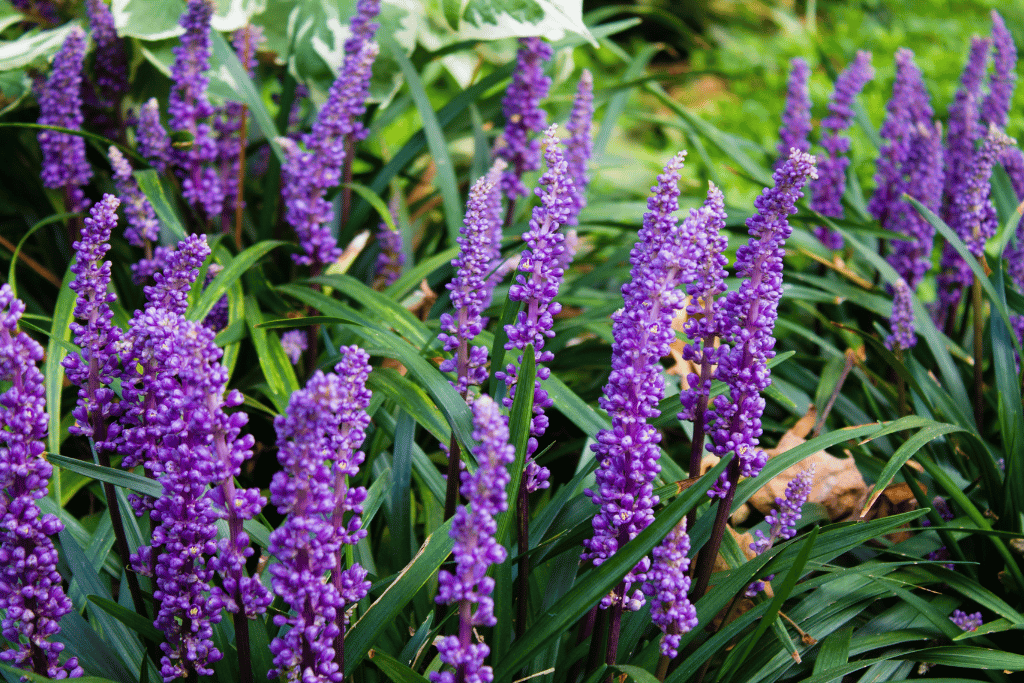
Liriope, commonly referred to as Lilyturf, is an elegant plant that serves as a charming groundcover, enhancing the aesthetic appeal of outdoor spaces. The plant produces spikey flowers that come in a range of purple, blue, or white hues. These blooms gracefully emerge above clusters of gently arching foliage that resemble grass blades. Liriope’s capacity to thrive under different light conditions, coupled with its minimal upkeep requirements, has contributed to its widespread popularity for edging garden borders, lining pathways, and adorning shaded areas.
The name “Lilyturf” is derived from its striking similarity to the leaves of lilies. Symbolically, Liriope represents perseverance and endurance. Its ability to thrive and spread slowly over time reminds us of the value of steady growth and consistency.
28. Lechenaultia – Australian brilliance in bloom
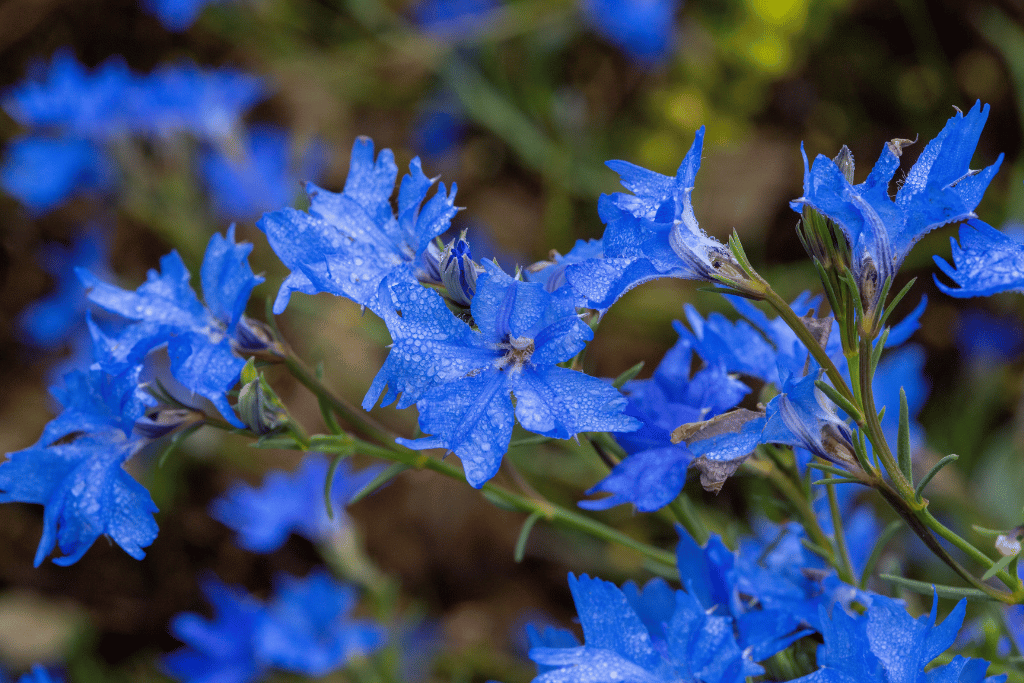
Lechenaultia, native to Australia, showcases brilliant colors that light up gardens. Its tubular flowers come in shades of blue, purple, pink, and red, creating a vivid display that attracts attention. These flowers symbolize creativity and ingenuity, inspiring us to embrace our unique qualities and showcase them proudly.
Lechenaultia’s unique appearance and vibrant hues make it a standout choice for rock gardens, containers, and wildflower landscapes. Its name pays homage to Jean Baptiste Louis Claude Lechenault de la Tour, a French botanist.
29. Laceflowers: Exquisite Delicacy in Blossom
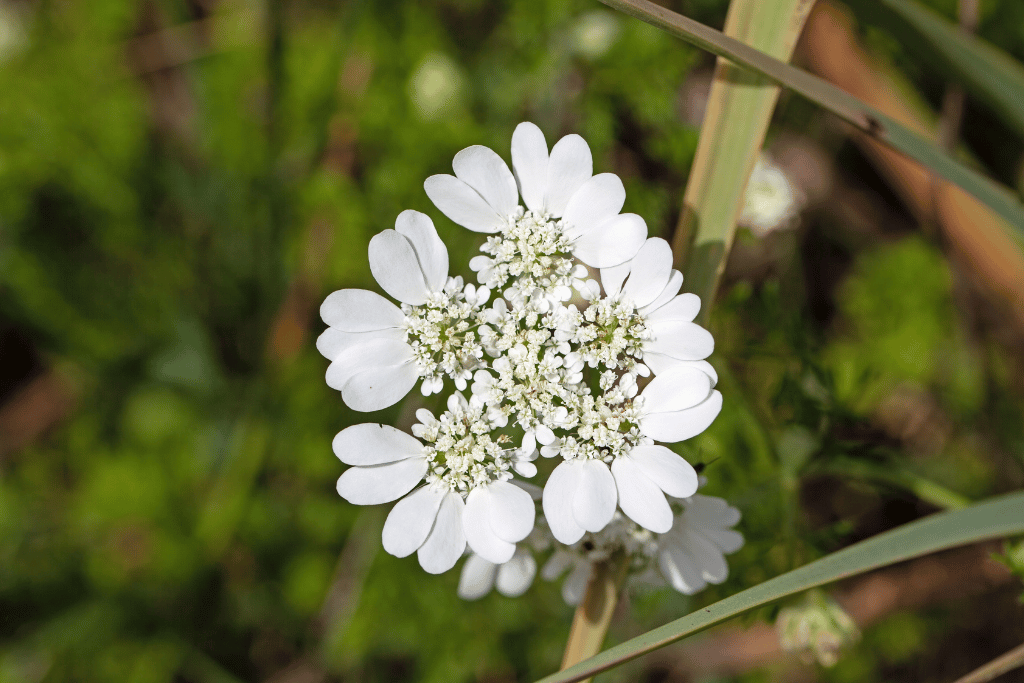
Native to the Mediterranean region, Laceflowers have a charming presence that makes them popular for both ornamental and symbolic purposes. Laceflowers hold a symbolic significance tied to purity and innocence. Their gentle appearance suggests a sense of refinement and grace, making them fitting choices for wedding bouquets and garden landscapes alike.
Laceflowers, scientifically known as Ammi majus, are a captivating addition to gardens and floral arrangements. These delicate annual flowers showcase intricate, lacy blooms that evoke a sense of ethereal beauty. The clusters of tiny, white flowers form delicate umbels that resemble lace, creating a soft and romantic ambiance. Laceflowers’ ability to mingle effortlessly with other blooms in arrangements adds to their versatility.
30. Lilacs: Elegance and Fragrance in Every Petal
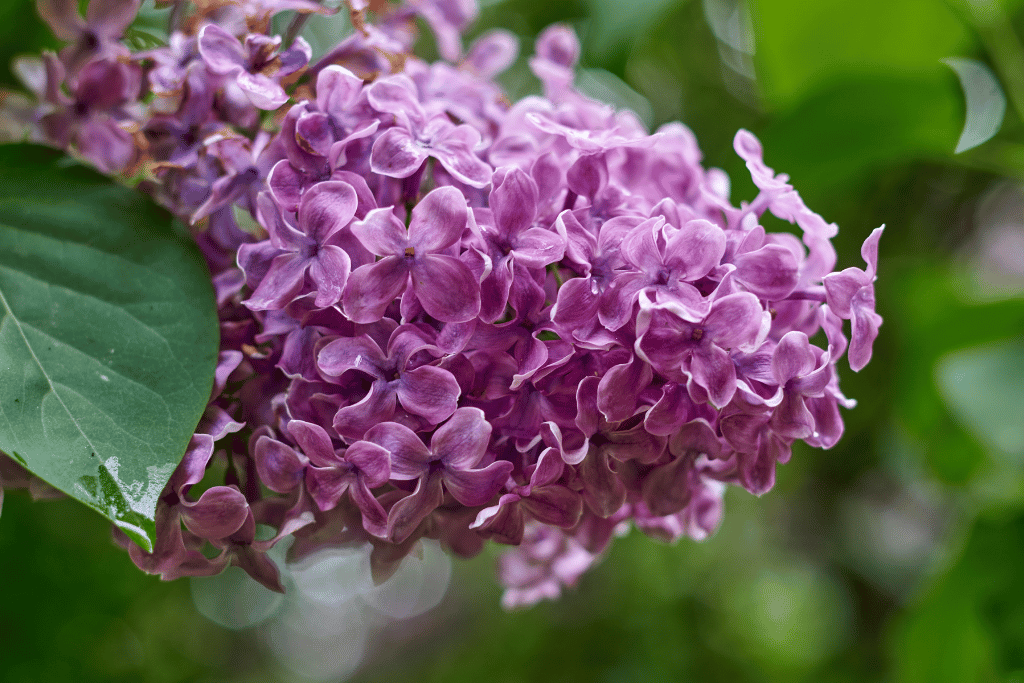
Lilacs, known by the botanical name Syringa, are renowned for their elegant appearance and enchanting fragrance. These deciduous shrubs produce clusters of fragrant flowers in shades of purple, white, pink, and even yellow. Lilacs are beloved for their captivating visual appeal and their ability to fill the air with a sweet and nostalgic scent.
Lilacs hold a rich history and cultural significance. They are often associated with emotions like love and remembrance. In the language of flowers, lilacs convey sentiments of youthful innocence and the freshness of spring.
The Lilac’s graceful and timeless presence makes it a cherished addition to gardens, where its blossoms bring a burst of color and charm. Whether used for their aesthetic beauty or their aromatic allure, lilacs remain a favorite among garden enthusiasts and admirers of natural beauty.


